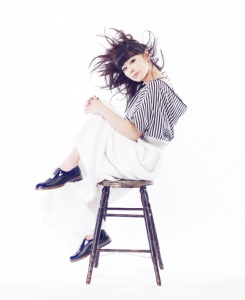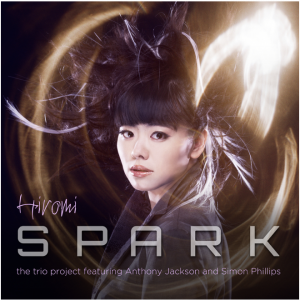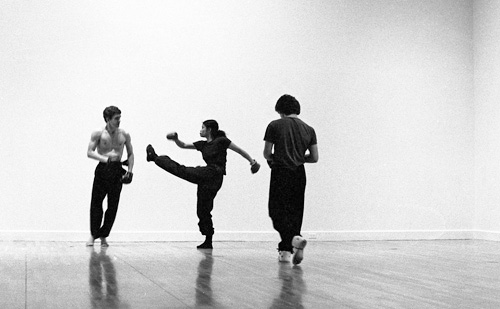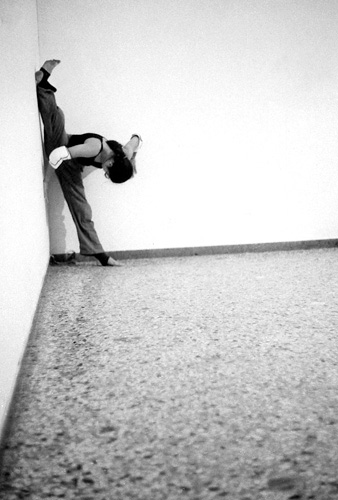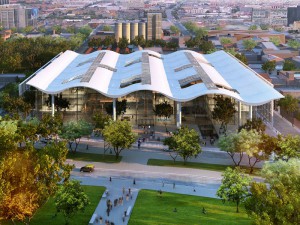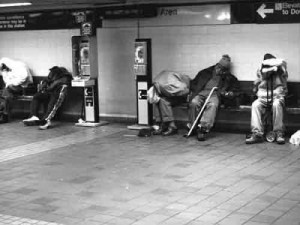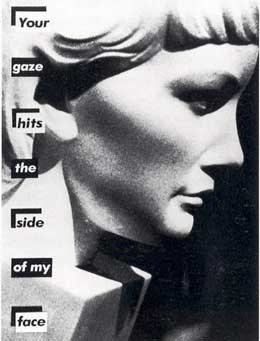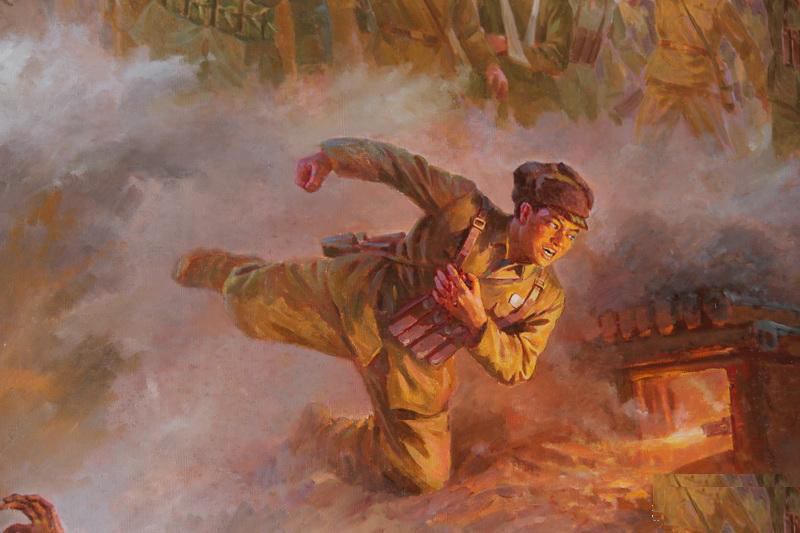The Expanding Field
Irit Rogoff
We work in an expanding field, in which all definitions of practices, their supports and their institutional frameworks have shifted and blurred. But the fact that we have all left our constraining definitions behind, that we all take part in multiple practices and share multiple knowledge bases, has several implications. On the one hand the dominance of Neo-Liberal models of work that valorize hyper-production have meant that the demand is not simply to produce work, but also to find ways of funding it, to build up the environments that sustain it, to develop the discursive frames that open it up to other discussions, to endlessly network it with other work or other structures so as to expand its reach and seemingly give it additional credit for wider impact. So in this context the expansion is perceived as a form of post-Fordist enterpreneurship.On the other hand the dominant transdisciplinarity of the expanded field of art and cultural production has entailed equal amounts of researching, investigating, inventing archives from which we can read in more contemporary ways, finding new formats, self instituting, educating, organizing and sharing. Most interestingly, it has dictated that each idea or concept we take up must be subjected to pressures from other modes of knowledge and of knowing – it cannot simply stay within its own comfortable paradigm and celebrate itself and its achievements. And so in this other context, the expanding field is one of broader contemporary knowledge bases and practices.
Seemingly in each of these two cases the emphasis is on ‘more’, but in order to come to terms with this duality which is often less than compatible , I need to think through what has happened in the field recently and of ways this might or might not be quite the opening up or loosening up, we had previously thought.So this paper is about several issues – one is to do with a desire that the proliferation of different activities that we see around us in the art world , does not remain as a simple model of multiplicity and diversity. But rather that we begin to think of them as enactments of an epistemological crisis – knowledge in crisis rather than practice or form in crisis.
Secondly I want to go back to the issue of archives, the vexed old question of the desire to know from a stable and accumulative place. In the context of this particular argument I wish to see whether in might be possible to read our selves out of others’ archives – others who might be less privileged in terms of the infrastructures that support them, but nevertheless might allow us a new and rich way of seeing ourselves. When Foucault first opened up a critical discussion of archives he spoke of ‘the insurrection of subjugated knowledges’ – knowledges that had been suppressed and marginalized because they spoke in the name those deemed inappropriate and un-influential in terms of class, sexuality, ideology and unruliness or incivility.
Subsequently Foucault opened up another seemingly unrelated problematic in his thinking about Parhessia, the demand to speak the truth publicly and at risk to oneself. One of the many things I am wondering about ‘archives’ is whether they might becomes sites of ‘parhessia’ – a site of risk taking. So.. archives as instability rather than stability and as a set of chellenges to how we see ourselves rather than as the way in which we ground and solidify our own significance.And that is the third issue that I want to touch on – Infrastructure – the seemingly neutral provision of efficient delivery of whatever we might need – but actually enacting a hugely hierarchical system of that which is valued by neo liberal governance. My interest in ‘infrastructure’ has to do with the recognition that it is one of the main building blocks of world governance systems such as colonialism or capitalism. But also to do with its masquerading as neutral form of efficiency, pure delivery and no interests. Whereas in the context of the art world, we can begin to see that cultural infrastructure is actually deeply value laden and that superior infrastructure has come to mean superior culture.It is of particular importance to me that all these questions be asked from within the art world. That they be seen as part of art’s expansion in the social. That we do not take for granted some earlier definitions of what art and its activities are and continue to reproduce these, for the challenges that we are facing in the contemporary moment, allow us to be a great deal more.‘What on Earth do they mean?’On occasion, within the discussions we are all part of, one will hear someone say the word ‘art’ and wonder what on earth they mean by that?– Do they mean ‘collectibles’ and ‘displayables’ and ‘catalogueables’ – objects and entities that can be known, that can be captured by these logics and fit neatly into the economies of institutional, foundation or private assemblies?– Or do they mean ‘artists’ who are working in the community or the field, trying to make complex the simple minded politics of representation practiced by the media – make complex by layering intricate and contradictory strata’s and performances as the cumulative affect of a place or a group or an event ?– Or do they mean the operations of new modes of research by which creative practitioners enter the arena of archival knowledges and posit other protagonists or other events, not main ones and not even marginal ones, but ones whose very articulation will trouble the subject of the archive, challenge its raison d’etre – an innocent vegetable within the archive of a genocide, the design of a refugee tent rewriting the narrative of custodial roles, the aerial shot as the amalgam of centuries of governance through surveillance – non symbolic and non representational ways of navigating a cultural entry point into the production of knowledge.– Or do they mean the group that has set itself up as an immigrant smuggling entity, or as a time bank or as the repository of mutations in the wake of genetic engineering or genetic modification, or as the fake company representatives of a multi national corporation offering a settlement to the victims of a disaster? The mimicry of structures and protocols that by their daring to enter the field of aid and support, produce a critical gesture.– Or do they mean a small group of, usually young, people huddled in a basement reading some smudged Xeroxes, insistent on their need to know something of urgency and to gain an unspecified set of tools by which to tackle the world and to make their engagement a performative manifest ?All of these make up an ‘art world’ as I have experienced it over the past decade. So clearly what was a trajectory that led to a final product or emanated from this final product in terms of curating or collecting or reviewing or critical assessment, has opened up to inconclusive processes whose outcome might be learning or researching or conversing or gathering or bringing a new perspective into circuits of expertise. The discrete boundaries of the product that enabled its capture by various economies or teleologies, have fragmented into strands of knowledge, of affect, of structure or of action which insist on presence in relation to other presences. – what was ‘art’ as various objects has assumed the status of ‘the manifest’ , the ability to alert us to the emerging of a presence in the world.It is not simply that the world of ‘art’ is one of multiple practices and a proliferations of incommensurate protocols that awkwardly coheres, resulting in the inevitable confusion of one word which has contradictory meanings for so many of the stakeholders within the field. But I would say that this goes far beyond a simple evacuation of stable meanings of this or that form or practice, and is actually a part of living through a major epistemological crisis. So here is the beginning of my argument – I am not interested in understanding the expanded field of art as a multiplicity, as a proliferation of coexistent practices, as a widening of what might have previously been seen as a somewhat narrow arena defined by fine art practice. In addition to art I would designate the terms: ‘practice’, ‘audience’, ‘curator’, ‘space’, ‘exhibition’, ‘performance’, ‘intervention’, ‘education’ and many other terms as subjected to this same disorientation – a historically determined meaning which has been pushed at the edges to expand and contain a greater variety of activity – but never actually allowed to back up on itself and flip over into something entirely different. The hallmarks of an epistemological crisis in the way in which it interests me here, are not the trading of one knowledge or one definition for another more apt or relevant one, but rather what happens when practices such as thought or production are pushed to their very limits? Do they collapse or do they expand? Can they double up on themselves and find within this flipping over another set of potential meanings? When Stefano Harney and Fred Moten wrote a text on debt and study for a special issue of e-flux journal on education, they took the maligned notion of ‘debt’ at the heart of a financial crisis of irresponsible fiscal marketization of debt, and flipped it over into something else: “But debt is social and credit is asocial” they said “Debt is mutual. Credit runs only one way. Debt runs in every direction, scattering, escaping, seeking refuge. The debtor seeks refuge among other debtors, acquires debt from them, offers debt to them. The place of refuge is the place to which you can only owe more, because there is no creditor, no payment possible.
This refuge, this place of bad debt, is what we would call the fugitive public.These are the hallmarks of an epistemological crisis, exiting from previous definitions, refusing former meanings, refusing moral inscription, refusing the easy stability in which one thing is seemingly good and the other potentially threatening. Risking a capacity for misunderstanding – what is it to declare debt social at a moment when millions of people are experiencing eviction or financial ruin due to the capitalization of debt? It means that one can no longer be content with taking positions within a given definition, but one has to make it stretch and twist itself inside out to become significant again.– The limits of multiplicityWould it not be simpler to settle for a celebration of multiplicity? A proliferation has about it a measure of happy mutuality, a multiplicity of things co-existing and not disturbing one another, multiculturalism being a fabled example of such happy harmony! – But the confusion about what the hell do they mean they say ‘art’, the epistemological disorientation, has to imply a contested ground and if this ground is contested then each mode of understanding is grounded not just in vested interests – the neo liberal art market and its evil twin cultural diplomacy, but in differing ways of knowing the world and its practices. However, while the antagonistic mode of differentiation may be crucial for the initial moment of distinguishing between this mode of practice and that one, between the vested interests that sustain them and their operations – for me, ultimately it serves to reinforce the divisions between hegemonic and alternative activities, a distinction that is unhelpful in the task of reconfiguring the field as a set of potentialities.There is a discussion by Derrida in his book ‘The Eyes of the University’, the book in which he reflected on the founding of the ‘College de Philosophie’ in Paris in the 1980s – in which he says “Boundaries, whether narrow or expanded, perform nothing more, than establishing the limits of the possible.”
So not wanting to operate in this impoverished mode of ‘the limits of the possible’, I need to think of how to go beyond the pluralistic model, an additive mode at whose heart is a very old Enlightenment conceit that cultural institutions are universalist and infinitely expandable – that they can stretch and expand to include everyone of the excluded, elided and marginalized histories. This conceit updated to the realm of post slavery, post colonialism, post communism insists that we must deal with issues of cultural difference and cultural exclusion by practicing their opposite, namely inclusion and compensation. Of course the problem with this infinitely expandable model is that it promises no change whatsoever, simply expansion and inflation.
So an epistemological crisis seems a much more fertile a ground from which to think the notion of an emergent field. An epistemological crisis would allow us to think not competing interests but absent knowledges, it would allow us to posit a proposition that would say that if we were able to find a way to know this, it might allow us to not think that. So the loss or the sacrifice of a way of thinking, as opposed to the cumulative proliferation of modes of operating.
For both Curating and The Curatorial, the notion of an epistemological crisis is paramount, since they are largely fields grounded in a series of work protocols with little cumulative history nor a body of stable empirical or theoretical knowledge at their disposal. Thus the temptation to hurriedly build up a body of named and applicable knowledge that would dignify the field is probably great. While such absences allows for a flexibility of operating and for the possibility of considerable invention, be it of archives or subjects or methodologies – there is an ongoing demand for an end product that coheres around an exhibition, around the act of revealing and concretizing, and that belies all the loosenings that had gone into its curatorial operations.
Our move to “Curatorial/Knowledge” addressed precisely such an epistemological crisis, one in which we would not determine which knowledges went into the work of curating but would insist on a new set of relations between those knowledges. A new set of relations that would not drive home the point of an argument, as in much academic work and would not produce a documented and visualized cohesion around a phenomenon, as in much of curatorial practice. So rather than say, ‘this is the history of curating and it will now ground the field professionally’, we have tried to map the movement of knowledges in and out of the field and how they are able to challenge the very protocols and formats that define it: collecting, conserving, displaying, visualizing, discoursing, contextualizing, criticizing, publicizing, spectacularising etc.’. If curating can be the site of knowledge to rehearse its crises then it has the potential to make a contribution rather than enact representation.
Going back to the question I began with, asking “what on earth do the mean when they say art?” this epistemological crisis allows us not to choose between different definitions, but to make the curatorial the staging ground of the development of an idea or an insight. Ideas in the process of development, but subject to a different set of demands than they might bear in an academic context or in an activist context – not to conclude or to act, but rather to speculate and to draw a new set of relations. To some extent that has resulted in an understanding that it is not that the curatorial needs bolstering by theory, philosophy or history – but rather that these arenas could greatly benefit from the modes of assemblage which make up the curatorial at its best, when it is attempting to enact the event of knowledge rather than to illustrate those knowledges.
Contemporaneity as Infrastructure
In our department at the university we often say that our subject is contemporaneity and that this is not a historical period. Rather we think of contemporaneity as a series of affinities with contemporary urgencies and the ability to access them in our work. Such an understanding of contemporaneity is equally significant for the curatorial, demanding that it finds ways of conceptually entering contemporary urgencies rather than commenting upon them, taking them up as ‘subject matter’ – the endless exhibitions about terrorism or a globalized art world we have endured in recent years, being a case in point. And not only is contemporaneity about the engagement with the urgent issues of the moment we are living out, but more importantly it is the moment in which we make those issues our own. That is the process by which we enter the contemporary.
So finally I would like to put forward a very tentative argument, not fully and deeply worked through yet, about the relation of our expanding field to infrastructure and to a redefinition of ‘archives’, and about this conjunction’s central importance to the understanding of contemporaneity. For Foucault the archive is– “A density of discursive practices, a system that establishes statements as events and things.” So rather than a documentary context, it is this understanding of the archive as establishing concreteness in the world by transforming statements into events, that allows us to take it up within the actual practices of contemporary art rather than as a support structure of knowledge.
When Okwui Enwezor was curating Doumenta 11 he said again and again, in an effort to ward off the constant tedious questions about which artists were going to be included in the show – that it is a lesser matter precisely which artists or works he would be including, but rather which archives we would be reading them out of. His efforts to privilege the archives and the reading strategies at our disposal have stayed with me as an important principle of contemporaneity.
As Foucault insisted quite early on “The analysis of the archive then, involves a privileged region: at once close to us and different from our present experience, it is the borer of time that surrounds our presence, which overhangs it ,and which indicates it in its otherness ;it is that which outside ourselves, delimits us.”
When we in the West, or in the industrialized, technologized countries congratulate ourselves on having an infrastructure: properly working institutions, systems of classification and categorization, archives and traditions and professional training for these, funding pathways and educational pathways, excellence criteria, impartial juries and properly air conditioned auditoria with good acoustics, — we forget the degree to which these have become protocols that bind and confine us in their demand to be conserved or in their demand to be resisted.
Following Michel Feher, thinking about the impact of NGOs as modes of counter governmental organization, the shift from consumers to stakeholders has significantly shifted our understanding of infrastructures. From properly functioning structures that serve to support something already agreed upon, to the recognition of ever-greater numbers of those who have a stake in what they contribute to or benefit from. Much of the more activist oriented wok within the art field has taken the form of re-occupying infrastructure: using the spaces and technologies and budgets and support staffs and recognized audiences, in order to do something quite different – not to reproduce but to reframe questions.
We think of infrastructure as enabling, we think it is an advantageous set of circumstances through which we might redress the wrongs of the world, to redress the balance of power within a post-slavery, post colonial, post communist world of endless war. When MOMA NY gets around to putting on an exhibition of contemporary Arab art, it is either celebrated as a great step against Islamophobia or decried as the cooptation of such work into hegemonic systems of market patronage. But whatever the position, there is a sense tat the incorporation of this work within an august context, into the ultimate infrastructure, that ignored its very existence for so long, is a bench mark – a contested benchmark, but definitely one.
So if we keep in mind Achille M’Bembe’s question “Is the edge of the world a place from which to speak the world?” we might reflect about what the absence of infrastructure does make possible, which is to rethink the very notion of platform and protocol, to put in proportion the elevation of individual creativity, to further the shift from representation to investigation.
Thinking about the links between collectivity and infrastructure, the obvious necessities of mobilizing as many resources and expertises as possible at a given moment in order to not only respond to the urgencies of the moment but also in the need to invent the means , protocols and platforms which will make that engagement manifest among strata of stakeholders – then the de-centering of the west is not only the redress of power within a post slavery, post colonial , post communist world but also the opportunity in the absence of infrastructure to rethink the relations between resources and manifestations.
In order to understand the potential of a particular condition we do not mythologize or romantically glorify it, but rather extract from it a revised set of relations – from Tucuman Arde to Collectivo Situationes, from Chto Delat to Raqs media Collective to Kharita, from Public Movement to Public school, from Oda Projessi to X-Urban – these shifts have and are occurring all around us, and while I would not claim that they are a model to be reproduced within far more privileged conditions, I would suggest that they are the archive from which we need to read our own activities.
Speaking for myself, I can honestly say that being lectured about the limits of the possible seems to me to be as impoverished a condition as working without the means of a dignifying infrastructure – nothing more, as Derrida says, than the means of containment. So perhaps the necessary links between collectivity, infrastructure and contemporaneity within our expanding field of art are not performances of resistant engagement, but the ability to locate alternate points of departure, alternate archives, alternate circulations and alternate imaginaries. And it is the curatorial that has the capacity to bring these together, working simultaneously in several modalities, kidnapping knowledges and sensibilities and insights and melding them into an instantiation of our contemporary conditions. |
延伸的区域
文|Irit Rogoff
译|苏东悦我们在一个不断扩大的领域里工作。在这个领域里,所有实践的定义、对这些实践的支持,以及机制的框架都已经转化和变得模糊了。我们把这些定义的束缚抛诸脑后,参与不同形式的实践,分享多元的知识基础,这种做法产生了一些影响。一方面,隐定大量生产物价的新自由主义工作模式成为了主流,意思是指此模式的要求不再仅是把作品完成,而且要寻找各种资助的管道来支持作品的创作,并为作品提供一个可持续发展的环境,发展论述的框架以开放讨论,并不断将之与其他的作品或结构交织,以此来扩大作品的联系,让它产生更多、更广泛的影响。在此脉络下,这种延伸可以看成是后福特主义企业精神的一种形式。另一方面,跨学科拓展了艺术文化生产的领域,成为主导的模式,而它所需要的相应研究、调查和文献库的建立,使我们可以以更为当代的方式观看它,寻找新形式,建立自己的机制、教学、组织和分享。最有趣的是,它要求我们所掌握的每个观点或概念,都必须承受来自其他知识系统和认知方式的压力,而不能安于所属领域的范式而固步自封。在此脉络下,正在拓展的领域便是更广泛的当代知识基础和实践之一。上述二者似乎都强调“更多”,但为了理解这并不完全兼容的两个方面,我有必要就这个领域里的近况进行疏理,从之前的想法中思考可能或不可能开拓或扩充的方向。因此我这篇文章要谈几个问题。其中一个是有关拓展的欲望:艺术世界中涌现大量不同的活动,而且已不是一般的多样模式。我们开始意识到这是一场知识论危机的预演,关乎知识层面而非实践或形式。第二,我想谈谈文献库,人们倾向从稳定且不断积累的地方中去获取知识,这一个老生常谈的问题。在这个论述中,我想尝试通过他人的档案来阅读自己,他人可指一些在基础结构条件上不如我们的人,但我们仍然可以通过他们得到全新丰富的方法来反观自己。当福柯首次就文献库作批判性的讨论时,他谈及“被压制知识的起义”,指那些被认为代表不恰当、无影响力的阶级、性别、意识形态以及蛮横或不文明的知识。接着福柯提出了另一个看似无关,但他一直在思考的疑难─“Parhessia”,即指甘愿冒着风险将事实公诸于世。我对文献库的诸多思索之一,便是文献库能否成为“Parhessia”的场域,即承担风险的场域。那么,文献库便是不隐定而非隐定,它挑战自我认知而非加强自我肯定。而第三个我要谈的是基础结构。基础结构听起来似乎是中性的平台,有效地为我们提供所需,但实际上它颁布新自由主义政府所侧重的巨大等级制度。我对基础结构的关注是因为它是如殖民主义和资本主义的世界政治系统中的主要一环,而且以高效和中立为名作掩饰。在艺术世界里,我们可以看到文化基础结构由各种价值观所左右,越好的基础结构已演变成代表越高的文化。对我来说,于艺术界世界内部提出这些问题尤其重要。这些基础结构被视为是艺术在社会的延伸部分,为我们带来了更多的可能性。我们不再能把艺术或艺术活动较早期的定义视为理所当然,并继续复制它们来回应我们在当代面临的挑战
“那到底指的是什么?”
有时候,在我们共同参与的众多讨论中,会听到某人说起“艺术”一词,心中不禁泛起疑问“那到底指的是什么?”
是否指“藏品”、“展品”或“可分类之物品”,所有被认知的实物,且符合收藏展示分类的逻辑,并与机构、基金会和私人组织的经济学一致?
或是圈子或领域内工作的“艺术家”,他们尝试以媒介的简单政治来表现错综复杂的关系,层层迭迭精致细密及自相矛盾的内容及行为,以此作为地方、组织或事件日积月累的沈淀?
或是新的研究模式,创意文化工作者进入档案知识的领域,纳入那些既非主流亦非边缘、将会对文献库主题造成困扰的其他主体及事件,来挑战文献库存在的理由。比如说,种族大屠杀文献中的一株无辜蔬菜;重写监护职责叙事的难民营账蓬设计;或者通过监视,以鸟瞰图作为千百年来政权的混合体;以非象征性和非代表性的方式探索知识生产过程中的文化切入点。
或是这样的一群人,他们成立偷渡移民组织,或者是时间银行,又或者是基因工程或基因改造的变异个案的贮藏库,再或者是伪装成跨国公司的代表,为灾民提供收容所?他们模仿社会各种结构及规则,大胆进入援助救难的领域,表现批判的姿态。
或者另外的一群人,他们通常都相当年轻,挤拥在地下室读着一些模糊的复印材料,坚持要了理解世界某些逼切的议题,掌握一些不明确的工具来应对这个世界,并使他们的参与变成一种宣言表演?
以上种种构成了我过去十年所经历体验的“艺术世界”。这轨迹中清晰指向的,或是对策展、收藏、评论或判批评估的影响的目的,是它开启了一个无确定目标的过程,结果可以是学习、研究、对话、聚会、或是把全新视角带入专业的圈子。这些目的分离的边界,使他们被记录于不同的经济及目的论,分散成知识、影响、结构及行动的多条线索,并强调自身与其他事物的关联;而过往何为艺术,艺术藉不同的对象表现出某种“显明”(原文:the manifest),提醒我们从这个世界中浮现的存在。
“艺术”世界充满多种实践,充斥大量不协调但共存的规则,引致在相同的领域中,各参与者对同一个词汇有多个矛盾的理解。不单如此,我要说的是这远远不止于解除各种形式或实践的固有意义,而是正经历一场大型的知识论危机。我的观点从这里开展:我对把拓展的领域理解为多元化,或共存实践的增长,或是之前被精致艺术所划定的狭隘领域的扩大并不感兴趣。
除“艺术”外,我想加上“实践”、“观众”、‘策展人’、“空间“、“展览”、“行为”、“介入”、“教育”以及许多其他一同与之失去定位的词汇。历史赋予“艺术”众多含义,它的边界一直在向外伸展,包含更广范的活动。但与此同时,它并没有支持自己转化成为完全不同的东西。知识论危机令我感兴趣之处,并不是以更完善或更相关的知识或定义去取代旧有的概念,而是当实践或生产被推到自身边缘的极致时会出现什么情况。它们会崩溃还是扩大?会否物极必反,并从中发展出另一套可能的意义?
当斯托法努·哈里(Stefano Harney)和费德·莫顿(Fred Moten)为e-flux杂志的教育特刊撰写了一篇关于债务的研究文章。他们以由不负责任的市场借贷引发的金融危机中,核心的 “邪恶”的“债务”概念,引申出另外的意思。“但是,债务是社会的,债权是反社会的。”他们写道:“债务是双向的,而债权则是单向的。债务向各个方向延伸、扩散、逃避、寻找避难所。负债的人向其他负债人寻求庇护,互相借贷。于债务避难所,你只能欠账越来越多,因为这里没有债权人,也没有真正的偿付。这避难所或坏债之地,我们可称之为逃亡者。”
这些就是知识论危机的特质,从之前的定义脱身,拒绝原来的意义,拒绝道德碑铭,拒绝以好或有被误解风险的潜在威胁来区分所带来的安稳。资本化的债务使数百万人面临失去家园经济破产,在这个时候声称债务是社会的有什么意义?这表示我们已不满足于从一个既定的定义去选择我们的立场,要把定义从内到外重新审视,使之再具意义。
多元化的局限
同意多元化这一讲法不是更简单容易吗?多元化常常被指是和而不同,相异的事物并行不悖,皆大欢喜,但多元文化主义正正就是这样一种和谐的幻觉!关于他们所说的“艺术”到底指的是什么的困惑,以及这种知识论上的迷失,就意味着争议的出现。每种理解不仅建基于新自由主义艺术市场以及它的邪恶孪生儿文化外交所赋予的立场,而是出自于了解世界及它的实践的不同方式。然而,对立的区分方法于最初分辨二者时或有必要。但于我而言,它最终强化霸权和另类活动之间的分野,这种区分对于重新梳理这个领域的可能性毫无益处。
德里达(Derrida)在他的藉作《大学之眼》(The Eyes of the University)中分析了八十年代巴黎“哲学学院”的成立。他说:“边界,不管是窄是宽,其作用只有一个,就是限制可能性。”
因为不愿意停留在“可能性的局限”这种匮乏的理解,我需要思考如何超脱这种多元主义的模型,思考一种附加模式,它源自古老启蒙主义的自高自大,认为文化机构高举普世价值以及可以无限扩展,延伸至包容所有被排除在外、省略以及被边缘化的历史。这种自负,在后奴隶主义、后殖民主义和后共产主义的领域内更新,它坚持我们必须以反面,即包容和补偿来处理文化差异和文化排拒。当然,这种无限扩展的模型并没有许诺任何改变,而只是扩展和膨胀。
因此,知识论危机于思考一个新兴领域上,是更为肥沃的土壤。从知识论危机的角度,我们不是去思考利益的冲突,而是其中缺乏的知识。我们假设一个命题,既然我们能够找到方法来认识“这一点”,很可能我们就没有思考“那一点”,即放弃某种思维方法而不是持续增加操作模式。
就策展和与策展相关的实践而言,知识论危机的概念极其重要,因为策展是以一系列惯例为基础,但却没有多少过往的历史例子可供参照,也没有稳固的经验或理论知识作为依据。因此仓促命名及建立一套可供应用的知识,并藉此来提高对这个领域的认知,这一股冲劲或是好的。虽然这种不管于文献档案、艺术主体还是方法论的欠缺,都有利于灵活操作和创新,但人们持续要求一套完整理论来贯穿各个展览、揭示以及具体化的行为,用以掩饰策展实践中的所有松散部份。
我们探讨策展与知识的关系,正是探讨知识论危机。在这里,我们不去框定“那些”知识可以进入策展的体系,但坚持这些知识彼此之间全新的联系。这些新的联系不会如许多学术研究般归结到一个论点,也不会像策展活动般把某一现象归纳成视觉纪录。所以与其说“这是策展的历史,它将从此建立一个专业范畴”,我们倒不如去勘察不同界别的知识是如何应用在策展领域,以及这些应用如何质疑界定策展领域本身的惯例和形式,如收藏、保存、展示、可视化、建立论述、给予脉胳、评论、传宣以及奇观化。如果把策展看作是一个知识场域,在这里正在上演自身的危机,那么策展或能对各知识领域发展作出贡献,而不只是具演绎的功能。
回到上面提到“当某人说起“艺术”一词时,那到底指的是什么?”,我在上文中勾勒的知识论危机,使我们不必从既有的定义中作选择,而是把策展看成是形成和发展观点或识见的舞台。观点和识见在这里是处于一个形成的过程,这个过程响应不同脉络的需求,或是学术的或是行动主义的语境,不下结论也不急于行动,而是去猜想和思考新的关系。某程度上,这种旁观姿态可以形成这样的理解:不是策展需要理论、哲学、历史等知识学科的支持,而是反过来这些学科会大大地得益于策展擅长的组合形式,策展为知识生产的盛会揭幕,而不是在举例说明那些知识。
当代性作为基础结构
在我们伦敦大学金匠学院的学系里,我们经常说我们研究的是当代性,而它不是一个历史时期。我们理解当代性为一系列关系密切的迫切议题,以及藉我们的工作去参与的能力。这种当代性的理解对于策展来说也是同等重要,因为它要求寻找方法,从概念上进入这些迫切议题,而不是隔岸观火地把它们当成是“主题”,比如说,近几年来有无数令人难以忍受的关于恐怖主义和全球化的展览。当代性不仅仅是关于参与当下的迫切议题,而更重要的是视这些问题为我们的问题。这就是我们进入当代的过程。
最后我要提出一个初步、仍有待更仔细深入思考的论点,就是之前所说拓展领域与基础结构,以及与被重新定义的“文献库”的关系,以及此关系对理解当代性的重要核心位置。对于福柯来说,文献库是“众多实践的浓缩,是以事件和事物作陈述的系统”。所以,根据这个理解,文献库不是一个记录档案的脉络,而是具体的东西;它将陈述转化为事件,从而使我们可以把它结合到当代艺术的具体实践中,而不只是背后的知识结构。
策划第十一届文献展的当奥奎·恩维佐 (Okwui Enwezor)尝试迥避计划邀请那些艺术家的烦厌问题时就反复重申,选择那个艺术家或那件作品是一个相对次要的问题,更重要的是我们将会从那些文献库来认识他们。他把文献库以及阅读文献库的策略放在重要位置,并将之与我们分享使用,对我来说,这亦成为当代性的一个重要原则。
福柯很早就提出“对文献库的分析涉及一个特许领域:它和我们很近,但又与我们当下的体验不同,它是环绕着我们、悬垂着的时间锥子,以自身的特异之处标示自己;正是在我们自身之外,所以划定我们的界限。”
在西方社会,或者说在工业化、科技化的国家,我们庆幸有基础结构:运作正常的机构、分类的系统、文献库以及与此相关的传统和专业训练、经费来源、教育通道、高标准、公正的评审以及配备空调及良好音效的大会厅。但是,我们忘记了在很大程度上它们变成了一种束缚和限制我们的惯例,我们需要考虑保留它们或是抵抗它们。
让我们根据米歇尔·法赫(Michel Feher)的说法,去思考非政府组织(NGO)的影响。非政府组织把消费者变成了持份者,这种转变改变了我们对于基础结构的理解,从前它们是正常运作的结构,支持某些我们认可的东西,而现在它们得到更多作出贡献或受益的持份者的认同。在艺术领域,大部分以社会行动为本的作品就是对基础结构的再占领:利用场地、科技、财政预算、工作人员以及观众群体来作相当不同的事情,不再重现,而是以不同框架重新设定问题。
我们认为基础结构可以起推动作用。我们认为这是有利条件,可以用来纠正世界上的一些错误,调整后奴隶主义、后殖民主义、后共产主义世界的权力平衡。纽约现代艺术博物馆(MoMA)克服困难展出阿拉伯的当代艺术,一方面它可以被当作是克服对伊斯兰恐惧迈进一大步的庆祝,也可以被当作是把这些作品带进市场赞助这种霸权系统的同谋。从任何角度而言,现代艺术博物馆作为一个备受推崇的基础结构,把长期以来被忽略的阿拉伯当代艺术纳入到它的体系之内,当中或有争议,但肯定是一个重要的里程碑。
如果我们记住阿启里·恩本比(Achille MBembe)的问题“是不是站在世界边缘才能谈世界?”。我们可以思考在没有基础结构的地方造就了什么可能性,这也是对于平台和惯例的重新思考,提升发挥个体的创意,进一步把再现转化成调查研究。
谈到集体和基础结构的关联,我们显然有必要把最多的资源和专业能力动员起来,不但对当下的迫切议题作出反应,而且要找出新的方法、章法和平台,使不同阶层的持份者的参与能够呈现出来。西方的去中心化不但纠正后奴隶主义、后殖民主义和后共产主义的权力关系,也是一个契机,在基础结构未出现之前,重新思考资源与实现的关系。
为了理解特殊条件下的可能性,我们不会把它神秘化或浪漫化地颂扬一番,而是从中提炼出全新的关系,从展览“Tucuman Arde”到艺术组织“Collectivo Situationes”,从“Chto Delat”到“Raqs Media Collective”,再到“Kharita”, 从公共运动到公共学校,从“Oda Projesi”到“X-Urban”,这些转化就在我们身边发生。我并不是提供一些用来复制的范例,而是建议这些是我们需要阅读的文献库,并通过它们来了解我们的活动。
对我而言,我可以诚实地说,被告诫可能性的局限就如在贫乏的基础结构中工作一般──别无其他所指;正如德里达所说,这只是约束的手段。或许集体主义、基础结构或当代性之间的必要关系,在我们这个正在拓展的领域中,并不是对抗的行为,而是一种能力,能够找出不同的出发点、另类文献库、不同的流通方式以及其他的想象。正是通过策展,我们有能力把这些东西都集合起来,同时在多个不同的模式中工作,“骑劫”各种知识、感情和识见,并将它们铸造成当代状况的实证。 |
 有一天,貴人遞給我保時捷跑車鑰匙,借我過把癮。在提不起速度的溫哥華市中心街道車流中行駛,它像一頭有脾氣卻不能發作的野牛。在我左右都是油光錚亮的新車,但偏偏我正前方是一輛非常舊款的豐田花冠(Corolla),暗淡蒼白的車身、生硬的造型、了無生趣地橫在我眼前,擋去我飛馳的宏心壯志。我不耐煩地朝它翻白眼,卻在不經意間見到了高聳入天的汽車圖騰。
有一天,貴人遞給我保時捷跑車鑰匙,借我過把癮。在提不起速度的溫哥華市中心街道車流中行駛,它像一頭有脾氣卻不能發作的野牛。在我左右都是油光錚亮的新車,但偏偏我正前方是一輛非常舊款的豐田花冠(Corolla),暗淡蒼白的車身、生硬的造型、了無生趣地橫在我眼前,擋去我飛馳的宏心壯志。我不耐煩地朝它翻白眼,卻在不經意間見到了高聳入天的汽車圖騰。